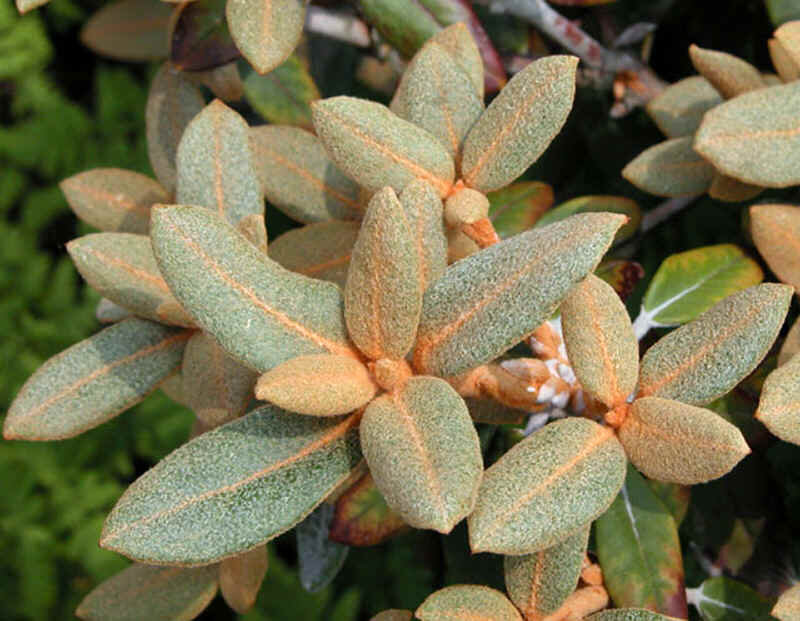Rhododendrons are by far one of the most spectacular blooming shrubs for northwest gardens. They come in many colors and sizes, are usually evergreen, and for the most part are easy to grow. With proper selection, a person could actually have a rhodie blooming in their garden from February through June.
Over the years I have found that many gardeners have a bad taste in their mouths when it comes to rhodies. What they remember are the monster green shrubs with huge leaves that obliterated their parent’s homes and had to be pruned back every few years to keep them under control. While we still sell larger growing varieties, the vast majority of rhodies on the market these days are compact, self-branching, and will top out in the 3 to 5 foot range - perfect for under windows and along the foundation of our homes.
But rhodies should never be relegated to mere foundation plants. There are over 1,000 different species of rhododendrons (which includes azaleas) and over 5,000 hybrids, many of which you might not even recognize as rhodies. Some have leaves as small as one quarter inch with delicate little flowers and thrive in hot dry soil, like you would find in a rockery. Others need full shade and have leaves that are covered with a fuzzy material called indumentum, which makes them look like teddy bears in the garden. Some rhodies are arboreal in nature and will actually form small trees when pruned properly.
By far, the vast majority of rhododendrons have rather normal looking leaves and thrive in our northwest maritime climate. Because all rhodies (and azaleas) have very shallow and fine root systems, it is imperative that gardeners make the extra effort to amend the soil with plenty of organic material and then top it off with an inch of mulch, all of which will help to retain moisture in the summer and provide better air exchange in the winter. Once established, rhododendrons can be fairly drought tolerant, but if you want fabulous blooms in the spring, you should really give them some extra water in the summer and also feed them after they bloom in the spring.
As far as placement, I like to use the rule of thumb that the darker the flower the more sun they will tolerate. All the reds, purples and most pinks do well in full sun, while the lighter shades of pink and white prefer some afternoon shade. Also, the larger the leaves the more some shade is appreciated. However, rhodies that are planted in full shade will often tend to be leggy (spindly) and shy bloomers. While rhododendrons can be planted under a canopy of large conifers, it is essential to provide supplemental water if you want them to be happy.
Traditionally, it seems like most rhodies only came in various shades of pink, red, white, or purple. More recently, breeders have introduced new flavors in the warmer tones of yellow, peach, or orange. Here are four dynamite cultivars that are sure to get your gardening salivary glands flowing…
Pomegranate Splash: This is a compact variety that forms a tight mound, reaching 4’ x 4’ at maturity. It is covered with bicolor blooms that are white in the center and pinkish/red on the margins with a prominent purple blotch on the dorsal lobe. The flower trusses are upright and can be composed of as many as 14 individual flowers. A real show stopper that normally blooms in May.
Seaview Sunset: Similar to Pomegranate Splash in that it is also is a bicolor, the predominate color is light yellow, but it is edged with a broad band of red-orange which gives it an overall warm feeling. It blooms earlier that Pomegranate Splash (probably late April) and is more compact, reaching only 3’ x 3’ in 10 years. The flower trusses can contain up to 16 individual flowers so again, it makes an impressive display in the garden.
Melrose Flash: A very late bloomer (perhaps as late as June for us), this rhodie makes a substantial shrub reaching 5’ x 5’ in ten years. While it is classified as a pink, the flowers are actually yellow-green with bright purple-pink margins. For me it has a very soft feminine look, but definitely “flashy”.
Cherry Cheesecake: A strong grower reaching 5’ x 5’ at maturity, it is considered a white bloomer despite the bright red edges and dark red blotch. Call it yet another bicolor that will add lots of pizzazz to the garden. Blooming in May, you should find a place for this one, it’s a keeper.
These four varieties offer some new and exciting variations from the old traditional flavors that will never cover up the living room windows and will always look full and lush, even when they are out of bloom. Keep in mind there are loads of amazing choices available that you’re sure to find one that screams “take me home”. Give them a try this spring, you won’t be disappointed. Stay safe and keep on gardening!



